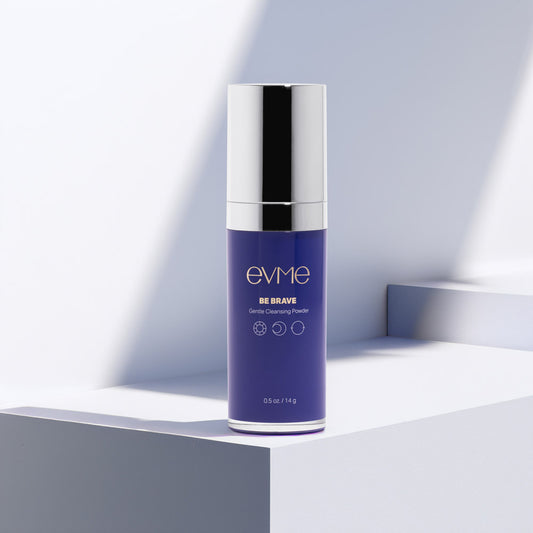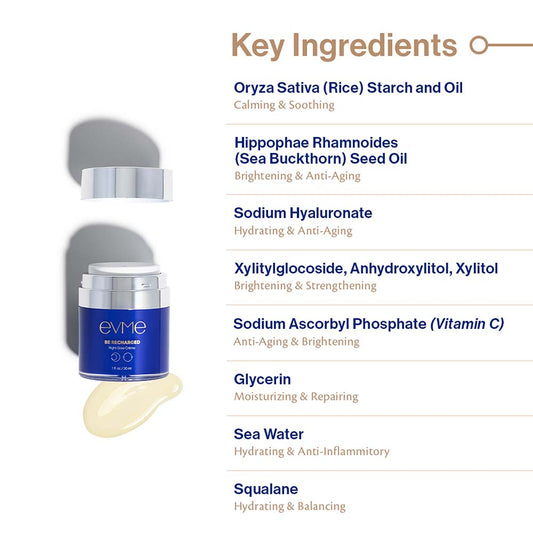Try Evme, allergist-created luxe skincare for sensitive and allergic skin.
Shop All ProductsUnderstanding Contact Allergies: How They Differ from Other Types of Allergies
January 08, 2024

Back To Articles
Even though there has been a growing global concern surrounding the rise of allergies, there seems to be a lot of confusion about how allergies actually develop. There are a lot of different types of allergies out there, from environmental allergies to food allergies and drug allergies, but contact allergies fall in a very different category.
Allergic reactions can be generally separated into two categories: immediate and delayed.
Immediate reactions are the “classic” type of allergic reaction that most people think of, causing sneezing or hives, for instance. Immediate reactions are triggered by a set of allergy cells that can quickly respond to what the body thinks is an intruder and flood the body with histamine and other mediators that produce an allergic reaction. This type of reaction is commonly seen with environmental allergies, food allergies, drug allergies, and some types of skin allergies. These types of allergies will respond to antihistamines like benadryl, claritin, zyrtec, etc.
Delayed reactions are a bit more tricky. This is where contact dermatitis or contact allergies come in. Contact dermatitis is more prevalent than you think, with a minimum of one in 5 people diagnosed with this condition! With this type of allergic reaction, the common allergy cells are not immediately triggered. First, T cells (cells in your immune system) within the skin are triggered by contact with allergen. This type of reaction is slower and takes up to a few days to cause a reaction, creating a “delayed” rash. Later, common allergy cells can be triggered, causing the usual signs of allergy, but this is typically delayed a few days, and isn’t usually as intense as the symptoms in immediate reactions. Because the common allergic mediators are not as involved in this reaction, antihistamines don’t work as well here, but steroids can be helpful at reducing the inflammation.
Differences in Symptoms
Contact allergies typically manifest as localized skin symptoms. Common symptoms include redness, itching, swelling, and sometimes the formation of blisters or dry patches at the contact site. In contrast, other allergies can involve a range of symptoms depending on the allergen and the affected organ/system. For example, respiratory allergies may cause sneezing, congestion, and wheezing, while food allergies can lead to gastrointestinal symptoms, hives, or even anaphylaxis, a serious multi-system reaction throughout the body.
Duration and Resolution
Contact allergies can resolve once the irritant or allergen is removed and the skin heals, which can take time, often several weeks or even months. However, if the contact persists or if there are repeated exposures, the symptoms may persist or become chronic. In contrast, other types of allergies may have acute or chronic symptoms, depending on the exposure and individual factors. Environmental allergies and food allergies, for example, often produce symptoms fast, but can also resolve faster if the exposure is removed.
How these two types of allergies develop
The immediate and the delayed reactions have some differences in the ways they are created. We call the process of becoming allergic to something as sensitization. For immediate reactions, like food allergies and environmental allergies, there is a special combination of how we were exposed, how much we were exposed to, and the timing of exposure, in a susceptible individual that determines if we are going to become allergic.
Who is considered a susceptible individual?
This is where genetics may play a role. People with a family history of allergies have a higher chance of developing allergies, and this risk applies to various types of allergies rather than being specific to just one type. For instance, if someone has a history of pollen allergies, their child may be at increased risk for all types of allergies (like food allergies) and also at increased risk for other atopic (allergy-based) diseases like asthma and eczema.
Similar principles apply to delayed allergic reactions like contact dermatitis, but interestingly, family history plays less of a role. In the case of contact dermatitis, the key factor is not so much whether an individual is susceptible to the allergen, but rather the extent of exposure to that allergen. The prime example of this is poison ivy. Having a family history of allergies is not a prerequisite for reacting to poison ivy. Instead, the question is not if you will react, but rather when you will react.
In the case of contact allergens, the more exposure you have to them, the higher the chances of experiencing a reaction.
In conclusion, it's important to understand the differences between contact allergies and other types of allergies. Contact allergies cause skin reactions and take longer to appear after exposure. The development of contact dermatitis depends on how much you come into contact with a particular allergen, so choose the ingredients you come in contact with very wisely! Other allergies like food and drug allergies have immediate reactions and can affect different parts of the body.
Understanding the differences between various types of allergies can help you minimize the risk of developing allergies, especially when it comes to contact allergies. By being aware of these distinctions, you can take proactive measures to reduce your chances of experiencing allergic reactions.
At Evme, we have removed thousands of known contact allergens and irritants to help reduce contact dermatitis once and for all! Why reduce allergens when you can just remove them all together and work towards getting rid of contact allergies!
Recommended articles
close
Evme Sans-Allergenic Skincare Products
- Choosing a selection results in a full page refresh.













